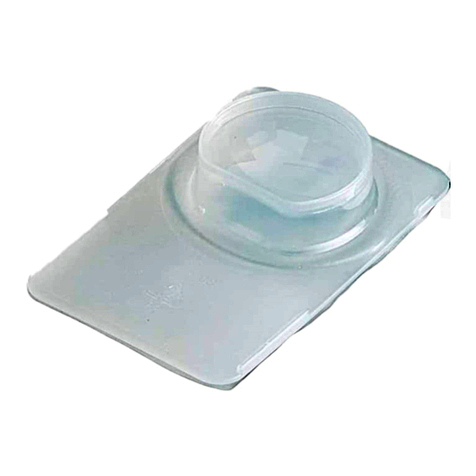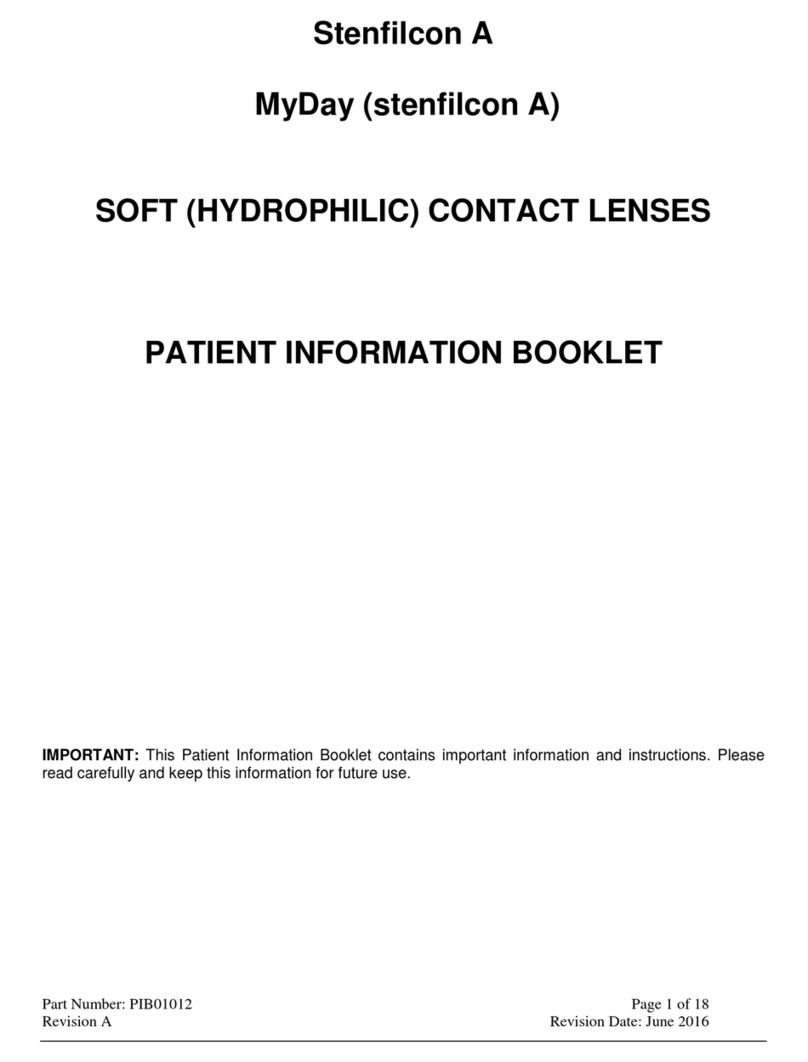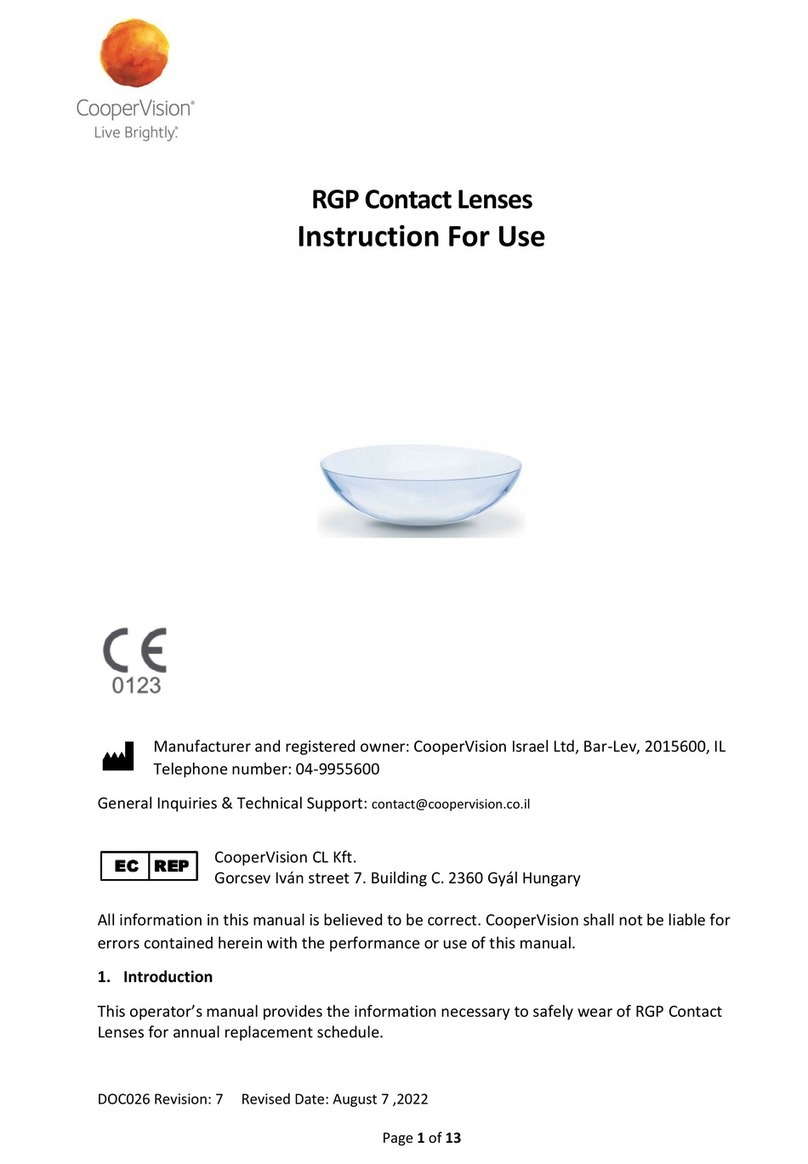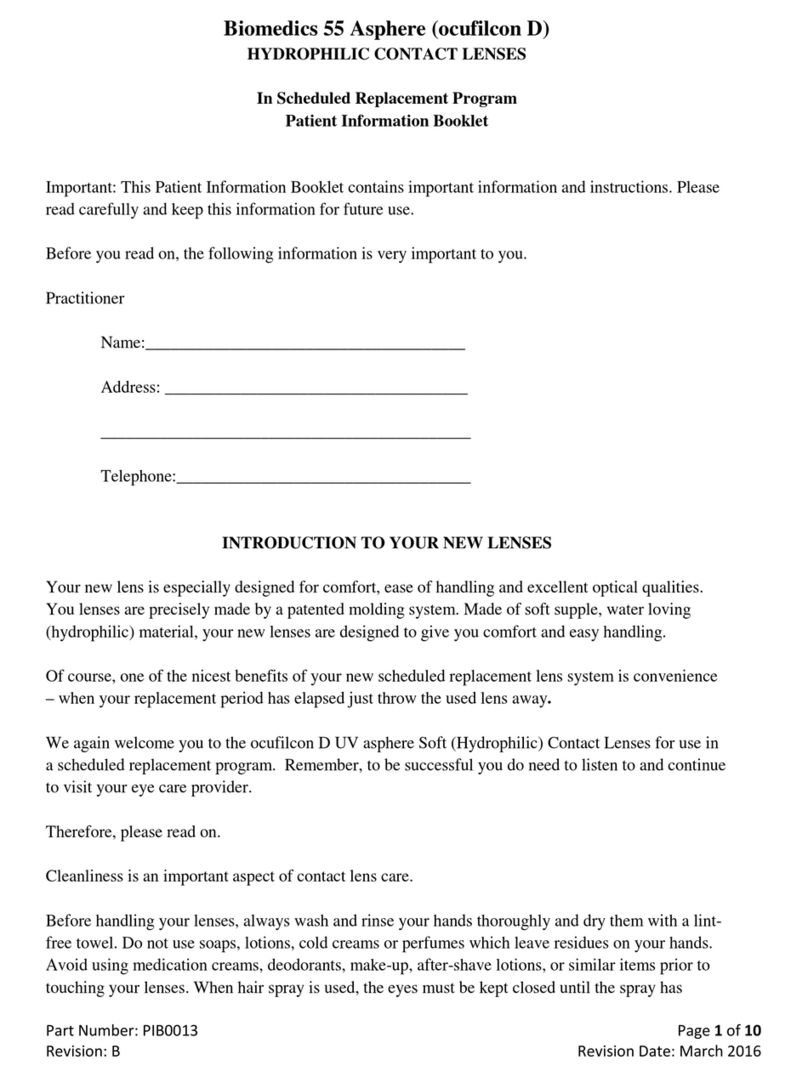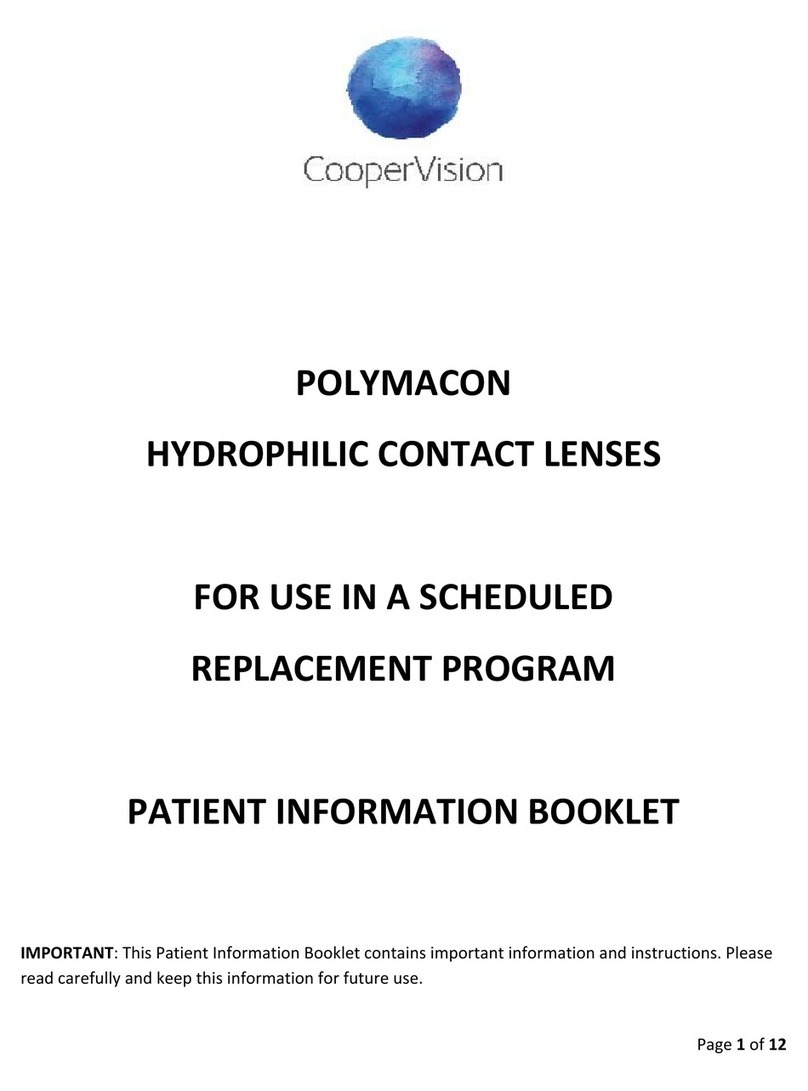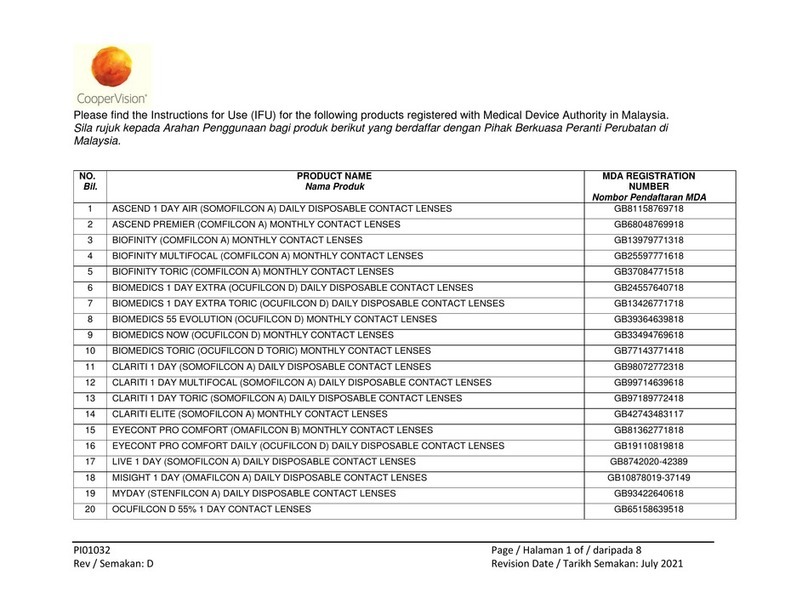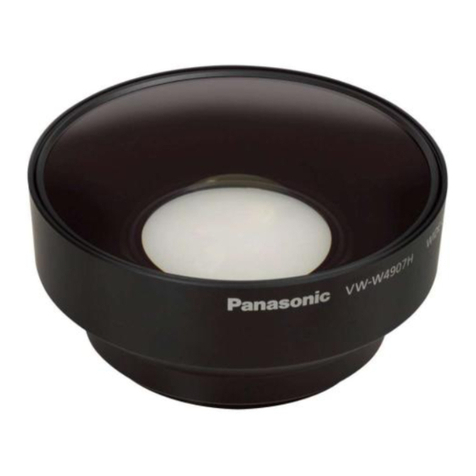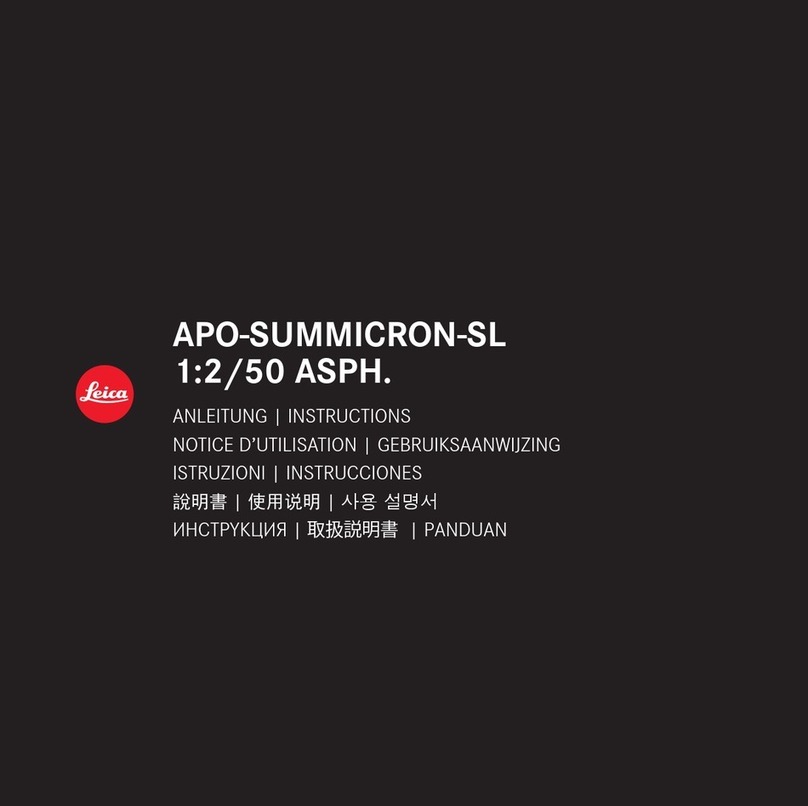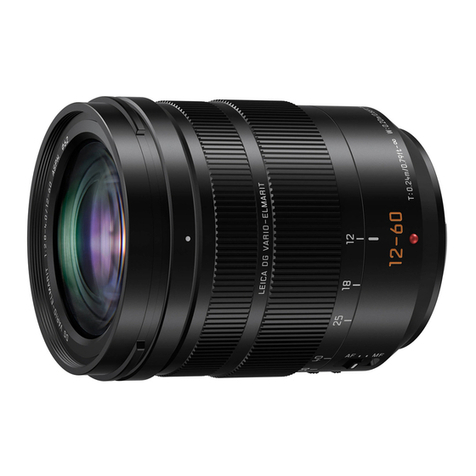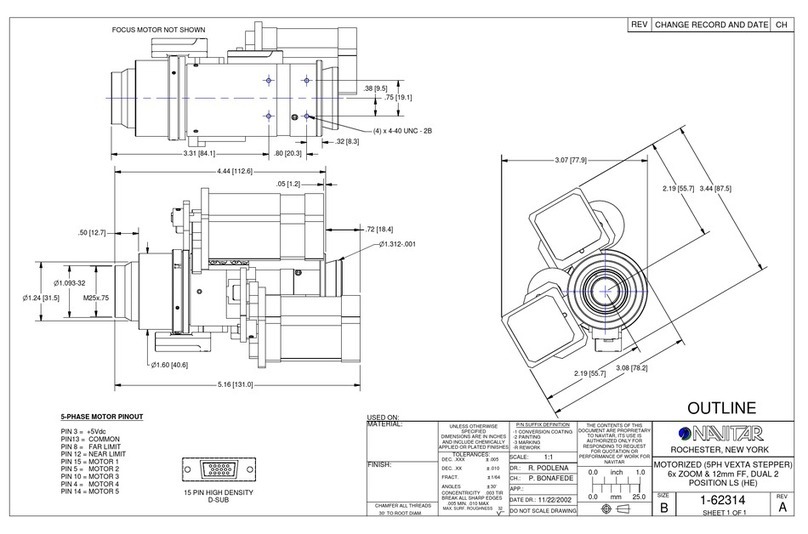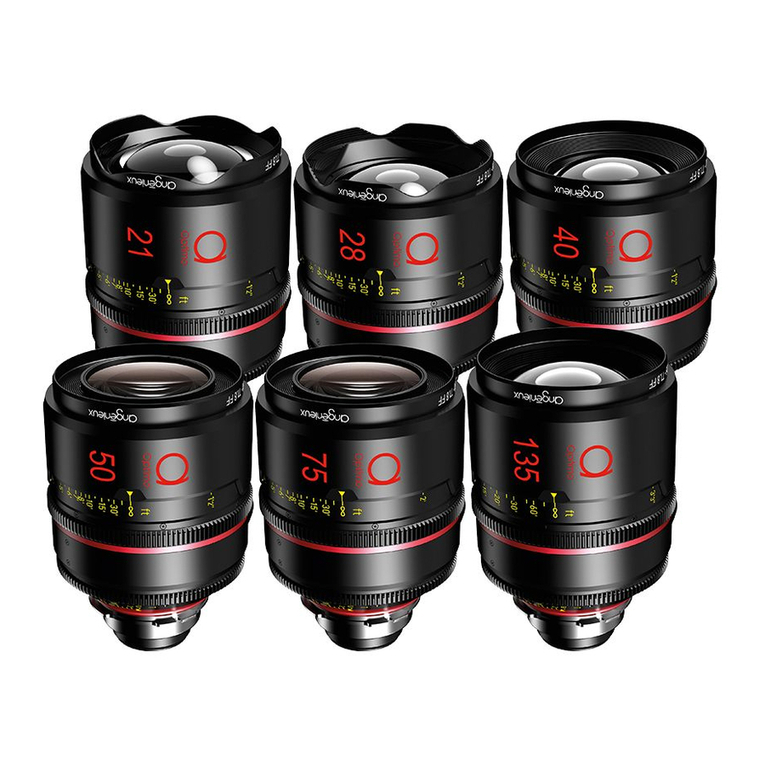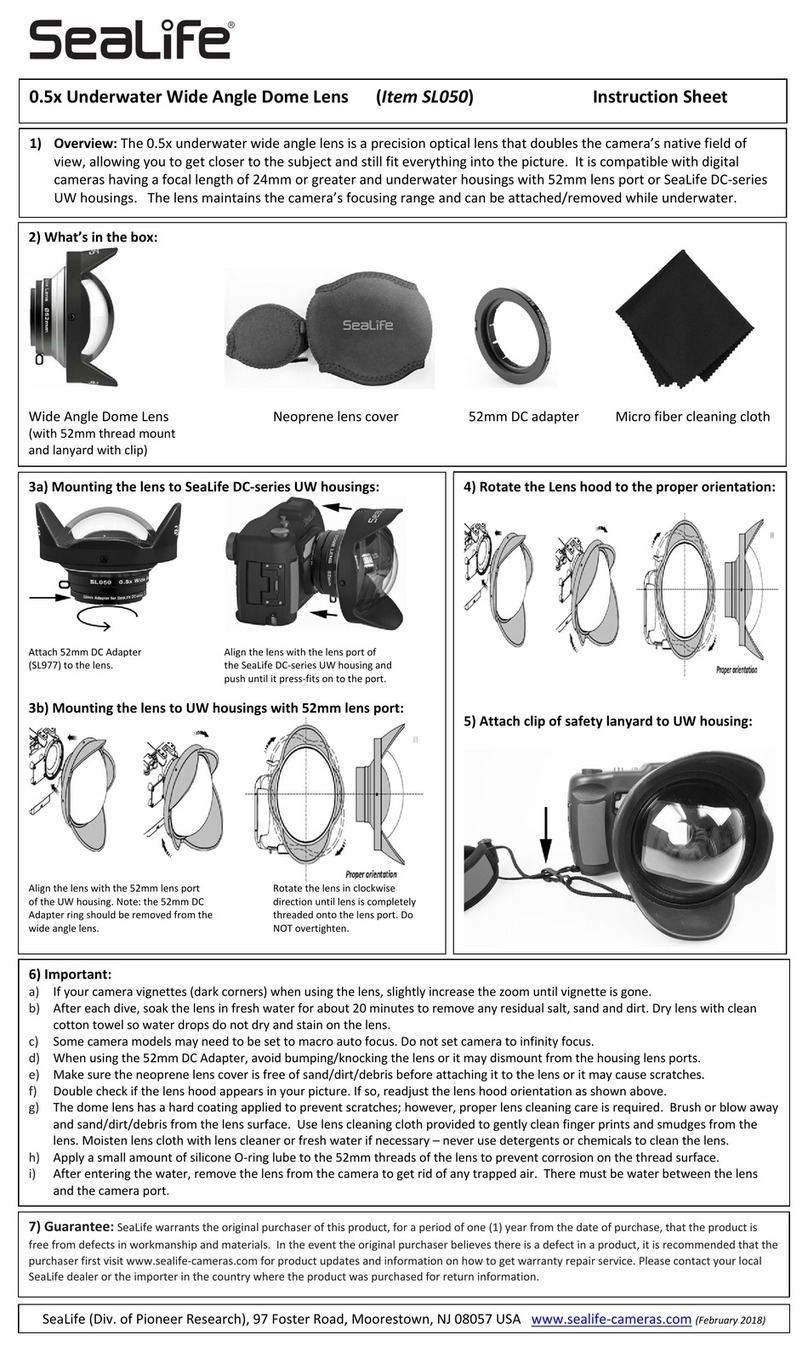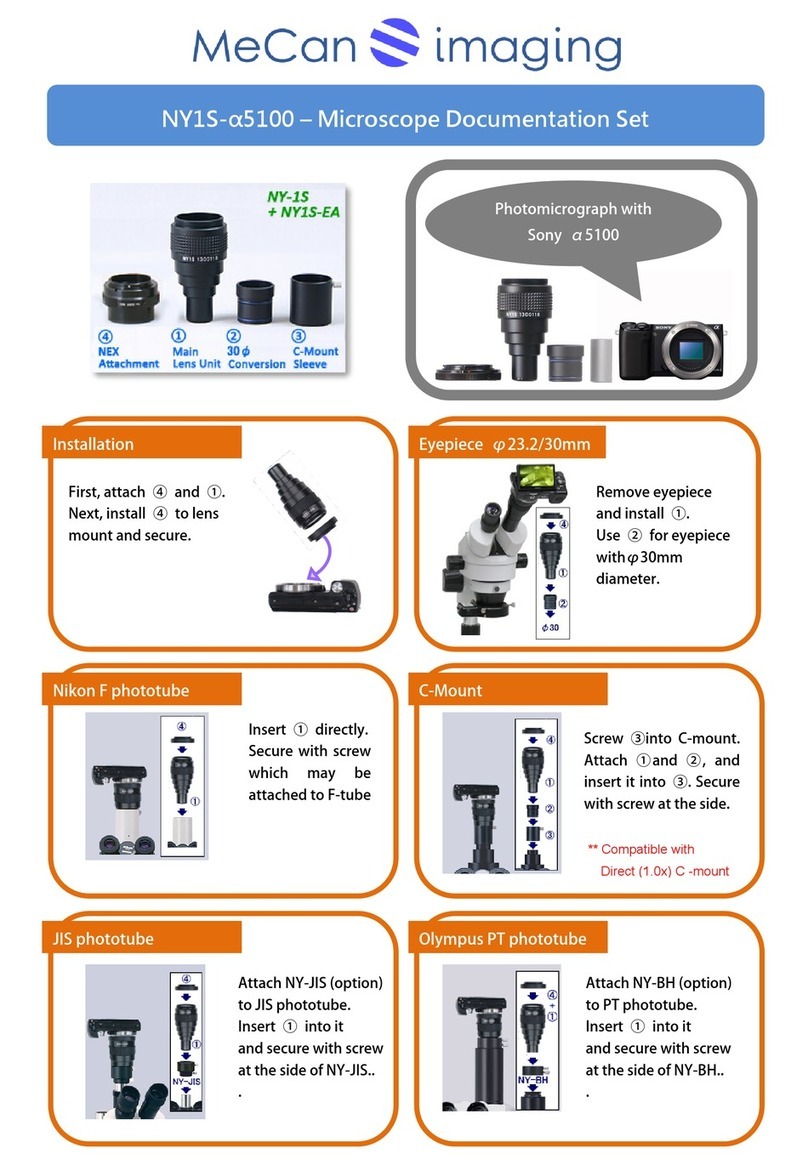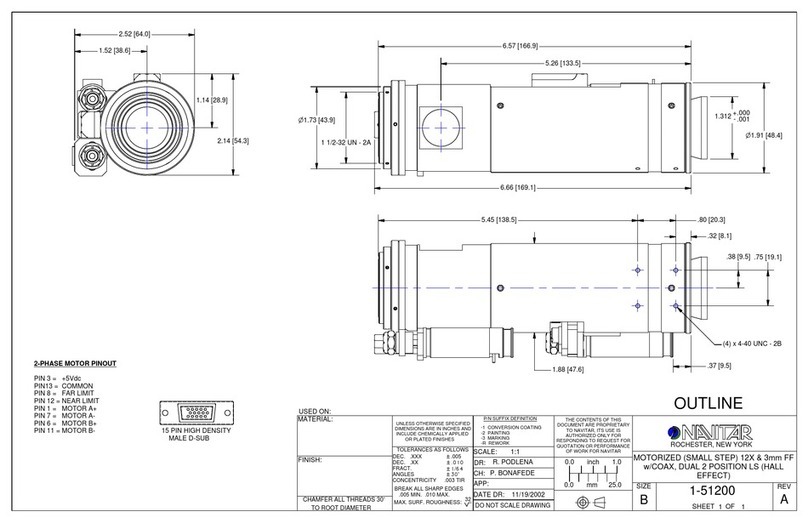
Part Number: PIB01024 Page 10 of 17
Revision B Revision Date: July 2018
towel before touching lenses. Have your storage container or carrying case ready to put the lenses in
upon removal.
a. Look straight ahead and up slightly. With the middle finger of your dominant hand,
pull the lower lid down slightly.
b. Gently pinch the lens between the index finger and thumb of your dominant hand.
c. Gently pull the lens away from the eye.
d. Repeat the procedure for the other lens.
e. Follow the required lens care procedures described under the heading, CARING FOR
YOUR LENSES (CLEANING, RINSING, DISINFECTING, ENZYMING,
STORAGE, AND REWETTING/LUBRICATING).
NOTE: If this method of removing your lenses is difficult for you, your eye care practitioner
will provide you with an alternate method.
CARING FOR YOUR LENSES (CLEANING, RINSING,
DISINFECTING, ENZYMING, STORAGE, AND
REWETTING/LUBRICATING)
1. Basic Instructions
For continued safe and comfortable wearing of your lenses, it is important that you first clean and
rinse, then disinfect and neutralize (for hydrogen peroxide systems) your lenses after each removal,
using the care regimen recommended by your eye care practitioner. Cleaning and rinsing are
necessary to remove mucus, secretions, films, or deposits which may have accumulated during
wearing. The ideal time to clean your lenses is immediately after removing them. Disinfecting is
necessary to destroy harmful germs.
You should adhere to a recommended care regimen. Failure to follow the regimen may result in
development of serious ocular complications as discussed in the WARNINGS section above.
If you will not or cannot adhere to a recommended care regimen for your lenses, or are unable to
place and remove lenses or have someone available to place and remove them, you should not attempt
to get and wear contact lenses.
When you first get your lenses, be sure you are able to put the lenses on and remove them while you
are in your eye care practitioner's office. At that time you will be provided with a recommended
cleaning and disinfecting regimen and instructions and warnings for lens care, handling, cleaning, and
disinfection. Your eye care practitioner should instruct you about appropriate and adequate
procedures and products for your use, and provide you with a copy of the Patient Instructions for
Vertex, Vertex Toric, and Vertex Toric XR contact lenses.
For safe contact lens wear, you should know and always practice your lens care routine:
